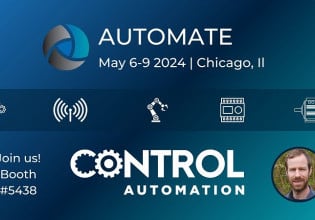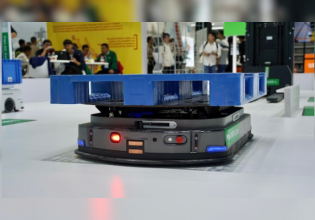“Results Before Launch”: 3D Simulation Software To Optimize Plant Processes
Mitsubishi Electric's 3D simulation software, MELSOFT Gemini, is designed to save manufacturers time and money by speeding up the development and implementation phases of production line design.
Mitsubishi Electric's latest 3D simulation software package, MELSOFT Gemini, simulates how a production line will operate so that plant engineers can decide whether changes should be implemented without having to reconfigure the line in the plant physically. Ultimately, the software package aims to reduce downtime for unfruitful process changes.

The MELSOFT Gemini software package simulates how a production line will operate. Image used courtesy of Mitsubishi Electric
3D Simulation Software
MELSOFT Gemini was designed specifically to simulate production lines before they are implemented. Whether there is a question to change an existing production line or to start a new one, the simulation package can be used to determine if these changes will be a good investment of time and resources.
Calling on an extensive library of tools, machines, and commands, the software can track how goods will flow through the production line and where human workers may need to walk or handle goods. It can then identify pain points, such as congested areas, locations with excess inventory, idle machinery, and others.
The simulation package also makes it possible for engineers to troubleshoot plant problems without necessarily having to visit the site. The production line can be modeled and examined for inefficiencies, and the engineer can remotely walk plant personnel through issues. If they need to visit the site in person, they will have narrowed down the list of potential issues and can focus on a few specifics.

Design work duration with and without 3D simulation. Image used courtesy of Mitsubishi Electric
MELSOFT Gemini Compatibility
The MELSOFT Gemini simulation package, with all of its capabilities, can be run on a standard desktop or laptop computer. It requires only a modest machine running Windows 10, with a decent graphics card and 8 GB of RAM. This means plant engineers can run this on a laptop from a coffee shop or trade show.
Another key advantage of this simulator package is that it can directly interface with machines and devices. This ensures accurate time and processing data from equipment instead of requiring the user to input all of this information.
The MELSOFT Gemini does not require an Open Platform Communication (OPC) server. An OPC server distributes data between devices, but there are communication delays. By interfacing the machines directly, timing and mechanical interference calculations are much more accurate.

By simulating production lines before they are implemented, manufacturers can assess potential safety hazards. Image used courtesy of Mitsubishi Electric
Other Case Uses
MELSOFT Gemini could potentially be used to assess safety hazards. For example, if there is a place where workers and forklifts routinely must cross paths, there is a chance of a forklift and worker collision. This software can determine where these places are and how often they occur. The data from this simulation could be used by the Environmental Health and Safety (EHS) manager to assess the total risk and suggest how to lower it.
One of the other features in MELSOFT Gemini is the ability to step through PLC code and see how it would behave in this environment. This has a much smaller production impact than testing and modifying PLC code on an active production line. Troubleshooting can be implemented in software simulation rather than on actual production equipment. When the next PLC software rollout occurs on the machines, it will have fewer bugs and will take less time to troubleshoot.
Visible "Results" Pre-launch
The MELSOFT Gemini simulation software package has the potential to save both time and money by speeding up the development and implementation phases of production line design, instead of having to implement solutions and see how they perform.






